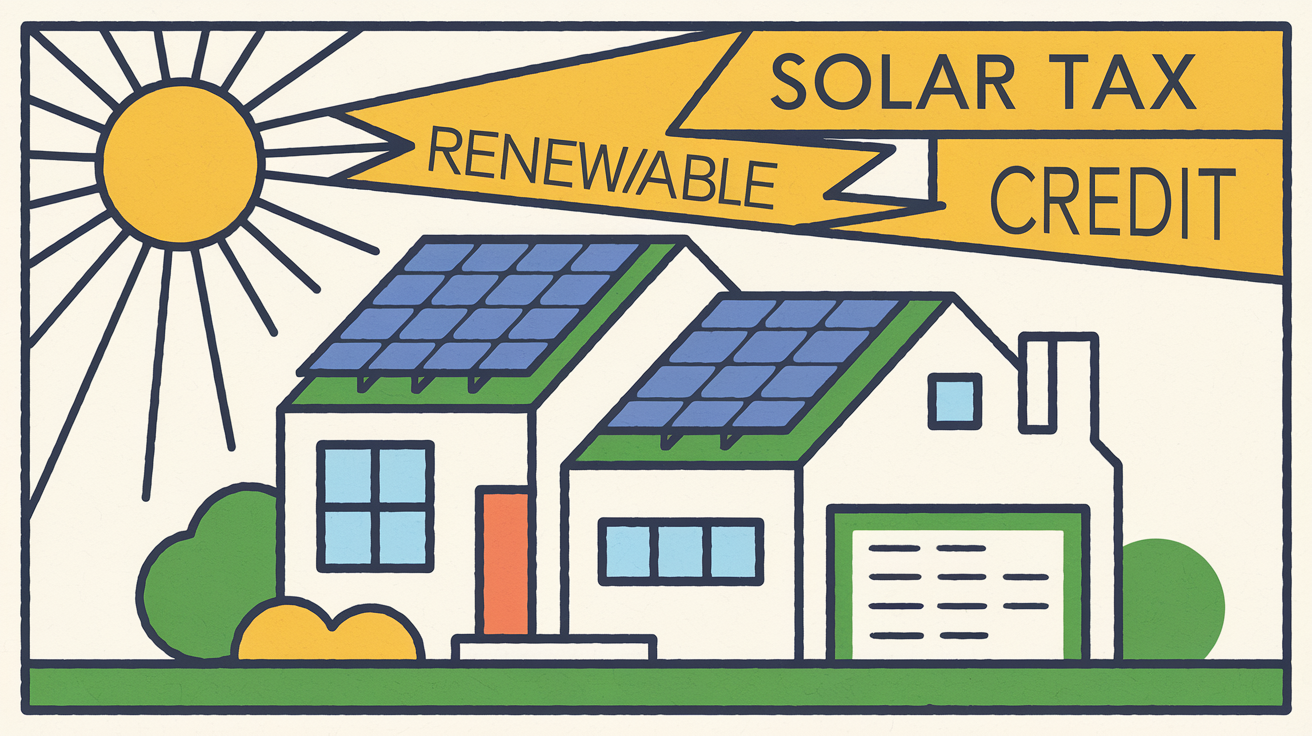
What is the Solar Panel Tax Credit?
The solar panel tax credit, also known as the Investment Tax Credit (ITC), is a federal incentive designed to promote the adoption of solar energy in homes and businesses. The ITC allows individuals and businesses to deduct a percentage of the cost of installing solar systems from their federal tax returns. For 2025, the ITC continues to be a game-changer for those considering investing in solar power.
- Credit Value: In 2025, the ITC is set at 30% of the total installation cost of a solar energy system.
- Eligible Installations: The tax credit applies to both residential and commercial solar installations, covering both photovoltaic panels and solar water heating systems.
1. Eligibility Requirements for the Solar Panel Tax Credit
To qualify for the solar panel tax credit in 2025, certain eligibility criteria must be met. These include ownership requirements, installation standards, and property conditions. Below is an outline of the essential factors that determine whether you qualify:
- Ownership of the Solar System: Only those who own the solar system are eligible for the credit. If you lease your system or participate in a power purchase agreement (PPA), you won’t be able to claim the credit.
- System Installation Location: The solar system must be installed on a primary or secondary residence, or a business property.
- New Solar Installations: The credit applies only to new installations. If the system is purchased secondhand, it does not qualify.
2. Understanding How Much You Can Save
The 2025 solar panel tax credit can result in substantial savings, depending on the total cost of the solar installation. The ITC allows you to deduct 30% of the cost of both materials and labor. Here's how this deduction looks for different project sizes:
| Installation Cost | Tax Credit (30%) | Amount After Credit |
|---|---|---|
| $12,000 | $3,600 | $8,400 |
| $18,000 | $5,400 | $12,600 |
| $25,000 | $7,500 | $17,500 |
| $35,000 | $10,500 | $24,500 |
As shown in the table, the larger your installation, the more you can save by claiming the tax credit.
3. Step-by-Step Guide to Claiming the 2025 Solar Tax Credit
To claim the solar panel tax credit, you must follow a few straightforward steps. Here’s a detailed guide on how to ensure you’re maximizing your savings:
Step 1: Install a Qualified Solar Panel System
Ensure that your solar installation meets the IRS guidelines. The equipment must be new, and you must own it, rather than leasing or entering into a PPA.
Step 2: Keep Thorough Documentation
It’s essential to maintain all records, including receipts, invoices, and contracts related to the purchase and installation of the solar system. These documents are necessary for verifying the installation cost when claiming the tax credit.
Step 3: Complete IRS Form 5695
To claim the credit, you need to fill out IRS Form 5695 (Residential Energy Credits) when filing your tax return. This form will help calculate your eligibility for the tax credit based on your total solar installation costs.
Step 4: Submit the Form with Your Tax Return
After completing the form, include it with your federal income tax return. If you're unsure about filling out the forms or have complex tax circumstances, it's advisable to consult a tax professional.
Step 5: Monitor Changes to the ITC Program
Stay informed about any future changes to the ITC. The government may update or adjust the credit’s percentage or eligibility criteria. Being aware of these changes ensures you don’t miss out on any future opportunities.
4. Tax Credit for Commercial Solar Installations
In addition to residential properties, the solar panel tax credit is available for commercial properties as well. Business owners can benefit from the same 30% deduction for installing solar panels or other qualifying systems. However, commercial installations may be subject to additional incentives or rebates depending on the state or local government.
- Eligibility: Just like residential installations, businesses must own the solar system and have it installed on a property that they own or lease.
- Incentives: Many states offer additional solar incentives that can be combined with the ITC to further reduce the overall cost of installation.
5. Additional Benefits for Nonprofit Organizations
Nonprofits and tax-exempt organizations can also benefit from the ITC, although they cannot directly use the tax credit. Instead, nonprofits can explore tax equity financing, which allows them to transfer or sell the credit to another entity, such as a business or individual.
Conclusion: Maximize Your Solar Savings in 2025
The solar panel tax credit provides an excellent opportunity for homeowners and business owners to significantly reduce the cost of installing solar energy systems. By understanding the eligibility requirements and following the proper steps, you can take full advantage of this federal incentive.
As you plan your solar installation in 2025, make sure to consult with your solar provider, gather all required documentation, and file the appropriate forms to ensure you maximize your savings. Going solar not only helps you save on energy costs but also supports a more sustainable future. Take advantage of the solar panel tax credit today to make your solar investment even more affordable!






